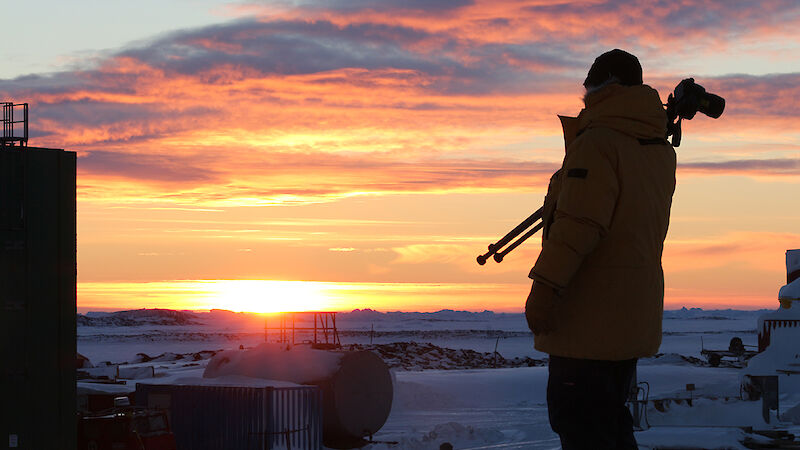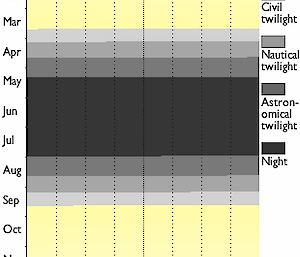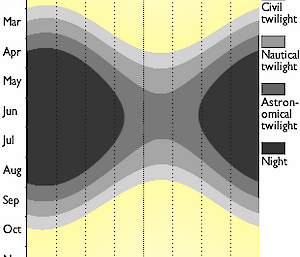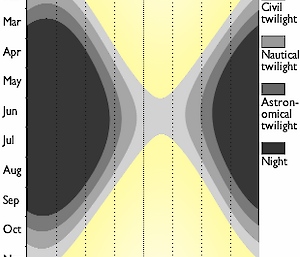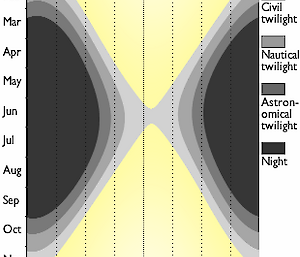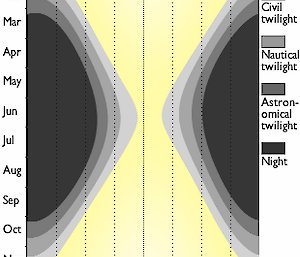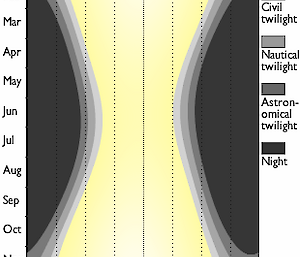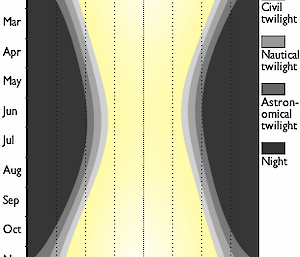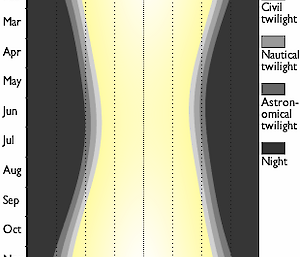For a few weeks each year the sun fails to rise on the world’s most southerly continent. Antarctica in mid-winter is bathed in a dusky half-light or shrouded in darkness, with the sun’s orbit ensuring the warming rays no longer reach the icy landmass. Each of the region’s resident animals, plants and humans adjust to this period of darkness in their own way. For a time then, in this International Year of Light, it is the lack of the sun that shapes life in Antarctica.
Many of the animals that breed and feed on the Antarctic landmass or in the waters adjacent to the coast, depart for the pack ice or other continents or islands. Only a few stick around, such as the emperor penguins, which have evolved physical characteristics to allow them to survive and incubate eggs over the harsh, dark winter.
Plants, such as mosses and lichens, have also adapted to cope with freezing temperatures and dehydration until the returning sunlight begins to melt the snow cover.
For Australia’s Antarctic expeditioners at Casey, Davis and Mawson, there are usually a couple of weeks in mid-winter (around 21 June) when the sun does not rise. While life on station continues normally, with regular chores and the maintenance of station equipment and infrastructure, most leisure activities have to be conducted indoors. Fortunately, our stations are equipped with modern facilities, including home theatres, libraries, internet, gyms and indoor sporting areas to bolster expeditioner morale and fitness. Another highlight of these dark winter days is the chance to photograph the ‘southern lights’ or Aurora Australis.
The diagrams below show how the length of day changes as you travel south to north from South Pole to Dome A, Davis, Mawson, Casey, Macquarie Island, Heard Island and Kingston (Tasmania).
The polar circles (both the Antarctic Circle at 66°33’ S and Arctic Circle at 66°33’ N) mark the latitude beyond which the sun remains completely below the horizon throughout the day on Midwinter’s Day and completely above the horizon on Midsummer’s Day. As you move closer to the poles, the periods of winter darkness and summer daylight increase.
Compare the graphs below for Mawson and Davis. Davis is located further south than Mawson and therefore the sun does not rise here for a longer period of time during winter. At the poles themselves, the seasonal changes are even more pronounced: 24 hours of daylight occur for several months over summer, while there is complete darkness for several months during winter.
Definitions
Civil twilight
This occurs after sunset or before sunrise when the centre of the sun is up to 6° below the horizon. At this time the brightest stars are normally visible, and under good weather conditions terrestrial objects will still be visible.
Nautical twilight
This occurs when the sun is between 6° and 12° below the horizon. At this time only the general outlines of ground objects may be visible, but the horizon is still visible, even on a moonless night.
Astronomical twilight
This occurs when the sun is between 12° and 18° below the horizon. There is no colour in the sky during astronomical twilight.

